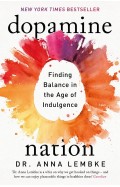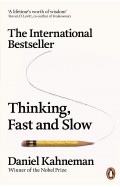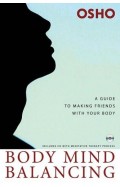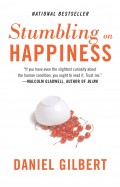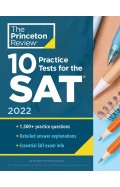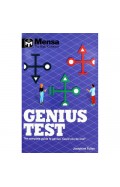- Home
- Non Fiction
- Education and Reference
- Phantoms in the Brain - Human Nature and the Architecture of the Mind
Phantoms in the Brain - Human Nature and the Architecture of the Mind
By: V. S. Ramachandran
-
Rs 2,605.50
- Rs 2,895.00
- 10%
You save Rs 289.50.
Due to constant currency fluctuation, prices are subject to change with or without notice.
‘Phantoms in The Brain’ takes a revolutionary new approach to theories of the brain, from one of the world’s leading experimental neurologists.
‘Phantoms in The Brain’, using a series of case histories, introduces strange and unexplored mental worlds. Ramachandran, through his research into brain damage, has discovered that the brain is continually organising itself in response to change. A woman maintains that her left arm is not paralysed, a young man loses his right arm in a motorcycle accident, yet he continues to feel a phantom arm with vivid sensation of movement. In a series of experiments using nothing more than Q-tips and dribbles of warm water the young man helped Ramachandran discover how the brain is remapped after injury. Ramachandran believes that cases such as these illustrate fundamental principles of how the human brain operates. The brain ‘needs to create a “script” or a story to make sense of the world, a unified and internally consistent belief system’.
Ramachandran’s radical new approach will have far-reaching effects.
‘Phantoms in The Brain’ takes a revolutionary new approach to theories of the brain, from one of the world’s leading experimental neurologists.
‘Phantoms in The Brain’, using a series of case histories, introduces strange and unexplored mental worlds. Ramachandran, through his research into brain damage, has discovered that the brain is continually organising itself in response to change. A woman maintains that her left arm is not paralysed, a young man loses his right arm in a motorcycle accident, yet he continues to feel a phantom arm with vivid sensation of movement. In a series of experiments using nothing more than Q-tips and dribbles of warm water the young man helped Ramachandran discover how the brain is remapped after injury. Ramachandran believes that cases such as these illustrate fundamental principles of how the human brain operates. The brain ‘needs to create a “script” or a story to make sense of the world, a unified and internally consistent belief system’.
Ramachandran’s radical new approach will have far-reaching effects.
Phantoms in the Brain - Human Nature and the Architecture of the Mind
By: V. S. Ramachandran
Rs 2,605.50 Rs 2,895.00 Ex Tax :Rs 2,605.50
Zubin Mehta: A Musical Journey (An Authorized Biography)
By: VOID - Bakhtiar K. Dadabhoy
Rs 892.50 Rs 1,050.00 Ex Tax :Rs 892.50
The Undiscovered Self - The Dilemma of the Individual in Modern Society
By: Carl Jung
Rs 2,335.50 Rs 2,595.00 Ex Tax :Rs 2,335.50
Syria's Secret Library: The true story of how a besieged Syrian town found hope
By: Mike Thomson
Rs 2,515.50 Rs 2,795.00 Ex Tax :Rs 2,515.50
The Unabridged Journals of Sylvia Plath
By: Sylvia Plath
Rs 4,225.50 Rs 4,695.00 Ex Tax :Rs 4,225.50
Dopamine Nation: Finding Balance in the Age of Indulgence
By: Anna Lembke
Rs 2,515.50 Rs 2,795.00 Ex Tax :Rs 2,515.50
Thrive: Finding Happiness the Blue Zones Way
By: Dan Buettner
Rs 1,185.75 Rs 1,395.00 Ex Tax :Rs 1,185.75
The Undiscovered Self - The Dilemma of the Individual in Modern Society
By: Carl Jung
Rs 2,335.50 Rs 2,595.00 Ex Tax :Rs 2,335.50
Syria's Secret Library: The true story of how a besieged Syrian town found hope
By: Mike Thomson
Rs 2,515.50 Rs 2,795.00 Ex Tax :Rs 2,515.50
The Unabridged Journals of Sylvia Plath
By: Sylvia Plath
Rs 4,225.50 Rs 4,695.00 Ex Tax :Rs 4,225.50
Dopamine Nation: Finding Balance in the Age of Indulgence
By: Anna Lembke
Rs 2,515.50 Rs 2,795.00 Ex Tax :Rs 2,515.50
10 Practice Tests for the SAT, 2022: Extra Prep to Help Achieve an Excellent Score (College Test Preparation)
By: Princeton Review
Rs 2,277.00 Rs 3,795.00 Ex Tax :Rs 2,277.00
Beyond the Selfie - The Art of Self Portraiture in the Digital Age
By: Rosie Hardy
Rs 5,035.50 Rs 5,595.00 Ex Tax :Rs 5,035.50
Zubin Mehta: A Musical Journey (An Authorized Biography)
By: VOID - Bakhtiar K. Dadabhoy
Rs 892.50 Rs 1,050.00 Ex Tax :Rs 892.50
Phantoms in the Brain - Human Nature and the Architecture of the Mind
By: V. S. Ramachandran
Rs 2,605.50 Rs 2,895.00 Ex Tax :Rs 2,605.50
The Undiscovered Self - The Dilemma of the Individual in Modern Society
By: Carl Jung
Rs 2,335.50 Rs 2,595.00 Ex Tax :Rs 2,335.50
Syria's Secret Library: The true story of how a besieged Syrian town found hope
By: Mike Thomson
Rs 2,515.50 Rs 2,795.00 Ex Tax :Rs 2,515.50
The Unabridged Journals of Sylvia Plath
By: Sylvia Plath
Rs 4,225.50 Rs 4,695.00 Ex Tax :Rs 4,225.50
Dopamine Nation: Finding Balance in the Age of Indulgence
By: Anna Lembke
Rs 2,515.50 Rs 2,795.00 Ex Tax :Rs 2,515.50












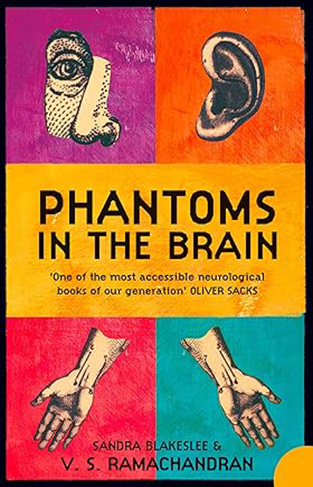
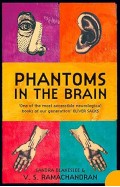
-120x187.jpg?q6)









